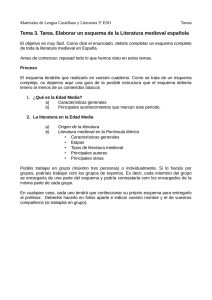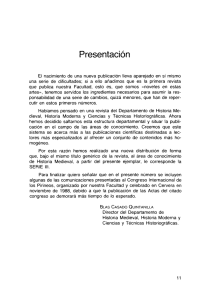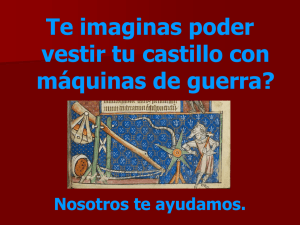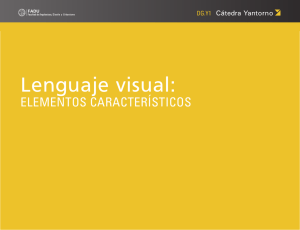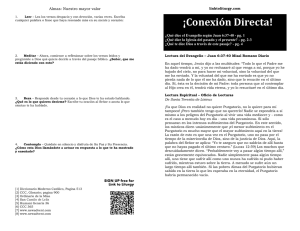Los lugares penales del más allá. Infierno y purgatorio en el arte
Anuncio
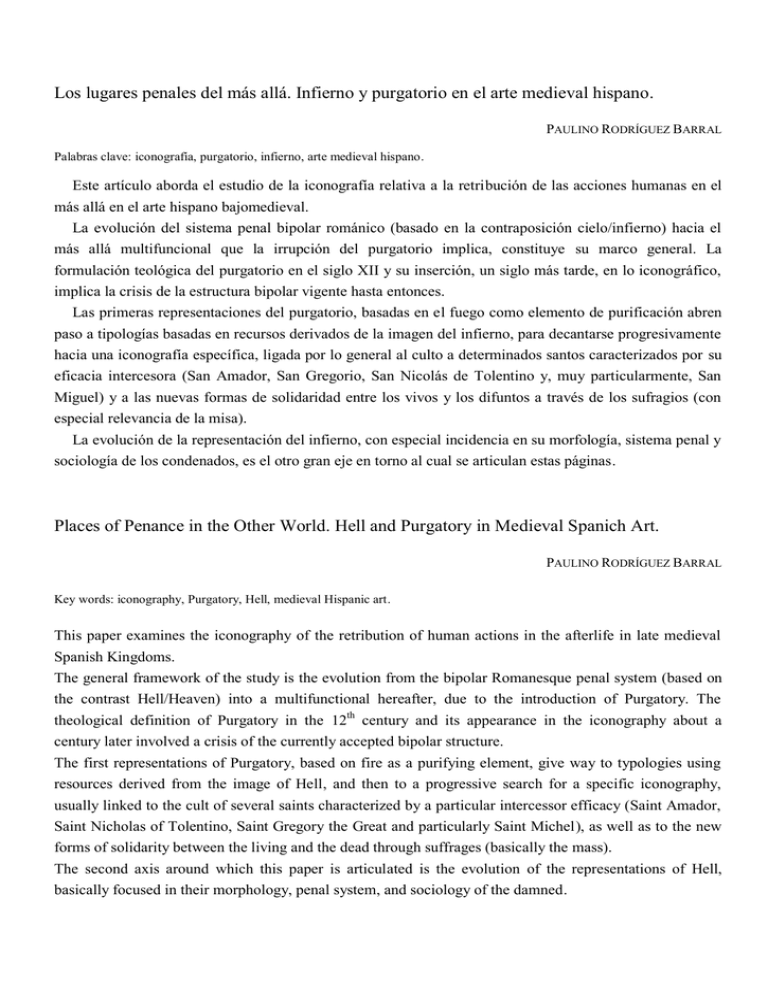
Los lugares penales del más allá. Infierno y purgatorio en el arte medieval hispano. PAULINO RODRÍGUEZ BARRAL Palabras clave: iconografía, purgatorio, infierno, arte medieval hispano. Este artículo aborda el estudio de la iconografía relativa a la retribución de las acciones humanas en el más allá en el arte hispano bajomedieval. La evolución del sistema penal bipolar románico (basado en la contraposición cielo/infierno) hacia el más allá multifuncional que la irrupción del purgatorio implica, constituye su marco general. La formulación teológica del purgatorio en el siglo XII y su inserción, un siglo más tarde, en lo iconográfico, implica la crisis de la estructura bipolar vigente hasta entonces. Las primeras representaciones del purgatorio, basadas en el fuego como elemento de purificación abren paso a tipologías basadas en recursos derivados de la imagen del infierno, para decantarse progresivamente hacia una iconografía específica, ligada por lo general al culto a determinados santos caracterizados por su eficacia intercesora (San Amador, San Gregorio, San Nicolás de Tolentino y, muy particularmente, San Miguel) y a las nuevas formas de solidaridad entre los vivos y los difuntos a través de los sufragios (con especial relevancia de la misa). La evolución de la representación del infierno, con especial incidencia en su morfología, sistema penal y sociología de los condenados, es el otro gran eje en torno al cual se articulan estas páginas. Places of Penance in the Other World. Hell and Purgatory in Medieval Spanich Art. PAULINO RODRÍGUEZ BARRAL Key words: iconography, Purgatory, Hell, medieval Hispanic art. This paper examines the iconography of the retribution of human actions in the afterlife in late medieval Spanish Kingdoms. The general framework of the study is the evolution from the bipolar Romanesque penal system (based on the contrast Hell/Heaven) into a multifunctional hereafter, due to the introduction of Purgatory. The theological definition of Purgatory in the 12th century and its appearance in the iconography about a century later involved a crisis of the currently accepted bipolar structure. The first representations of Purgatory, based on fire as a purifying element, give way to typologies using resources derived from the image of Hell, and then to a progressive search for a specific iconography, usually linked to the cult of several saints characterized by a particular intercessor efficacy (Saint Amador, Saint Nicholas of Tolentino, Saint Gregory the Great and particularly Saint Michel), as well as to the new forms of solidarity between the living and the dead through suffrages (basically the mass). The second axis around which this paper is articulated is the evolution of the representations of Hell, basically focused in their morphology, penal system, and sociology of the damned.


